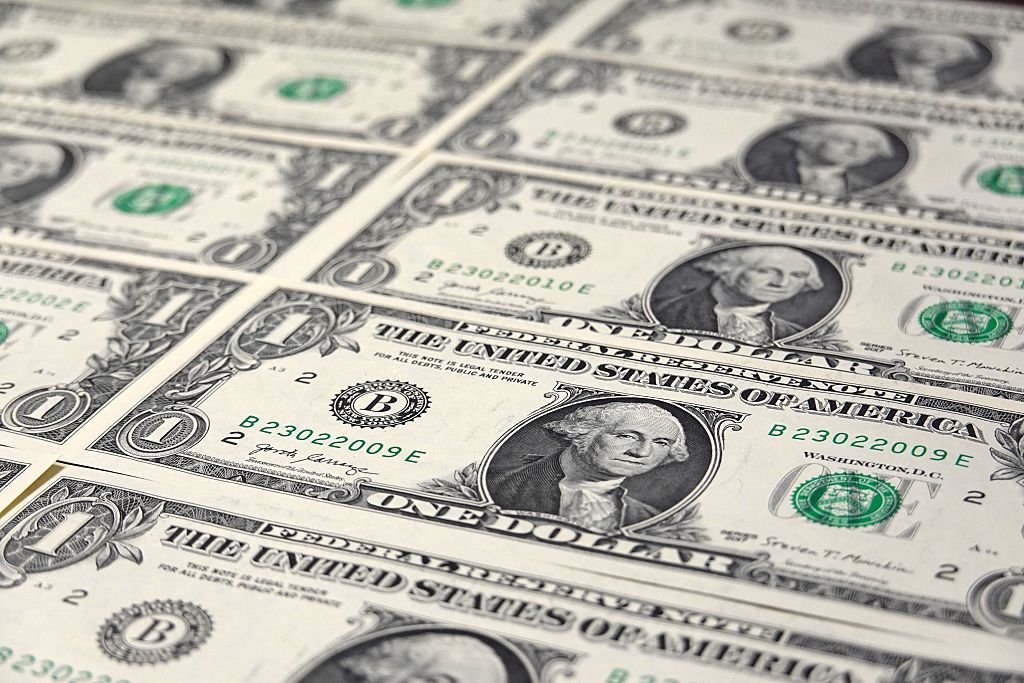Americans’ wallets could be set to take a hit as the U.S. dollar has tumbled to a three-year low amid concerns about the stability and strength of the country’s economy.
The dip could aid domestic businesses that export U.S. goods, but will make international travel and imports pricier for Americans. The U.S. dollar has already lost about 10% of its value this year, in contrast with the euro, which reached its highest level in nearly four years after gaining 0.4% on Tuesday.
[time-brightcove not-tgx=”true”]
The devaluation of the dollar, the world’s dominant reserve currency, on Thursday came after news outlets reported that President Donald Trump is considering announcing a new Federal Reserve Chair this fall, ahead of the end of current Chair Jerome Powell’s term. The Wall Street Journal first reported the news on Wednesday. The Fed has faced pressure from Trump to lower borrowing costs, but has stopped short of doing so in order to assess the potential impact of the President’s tariffs and keep unemployment low.
In addition to Trump’s tariffs, his “Big, Beautiful Bill” has contributed to uncertainty surrounding the U.S. economy. Economists have warned that the legislation could add more than $2.5 trillion to the federal debt, despite claims by the Administration that it would save money.
Here’s what to know about the weakening dollar.
Why did the U.S. dollar fall?
A number of factors contribute to the value of the U.S. dollar, among them how in demand it is from central banks and other financial institutions. The country’s broader fiscal situation, including inflation rates, trade relationships, debt, and trade deficits, also play a role.
As economists have warned about a potential U.S. recession or economic slowdown, investors have pulled back on investing in the U.S. “The institutional quality that the U.S. had in terms of being a safe haven has been really undermined,” says Bilge Erten, a professor of economics at Northeastern University. “Why would you invest in U.S. assets when you know that the U.S. dollar is likely to continue to lose value?”
Trump and his policies have contributed to many of the concerns raised about the economy in recent months. Some experts, however, say that while political factors help shape the strength of the U.S. dollar, its devaluation was projected to occur regardless of the winner of the 2024 presidential election. “No matter what happened, there was a high chance that the dollar was going to fall, and I think it’s going to fall further,” says Kenneth Rogoff, a Harvard professor and author of Our Dollar, Your Problem: An Insider’s View of Seven Turbulent Decades of Global Finance and the Road Ahead.
Rogoff, who predicted the fall of the U.S. dollar in his book, argues that its dip in value is part of its typical fluctuation. “It had reached a high we had only seen in 2002 and 1985 and both of those times, it fell very sharply in the ensuing years,” he says. The dollar most recently saw a spike in value around 2015, though it deteriorated during the COVID-19 pandemic, before rising again. Its recent high rate meant that it was projected to fall in the years to come, according to Rogoff.
That’s not to dismiss the role that Trump’s policies may be playing, however.
Rogoff points to the President’s sweeping “Liberation Day” tariffs as a policy that he says “accelerated the process.”
“Trump can absolutely make the dollar go down by saying, ‘I’m going to tax investors if they come into the United States,’ which is in the Senate Bill. That’s obviously going to discourage money. It’s going to drive down the dollar. So there are lots of ways to play with it,” Rogoff says.
How will the dip in the U.S. dollar impact Americans?
The dip in the U.S. dollar means that its exchange rate is less strong, making international travel more expensive for Americans. The prices of imported goods will also be higher, experts warn. “When someone from Europe is selling to the U.S., they’re going to take [the dollar’s devaluation] into account, because once they convert what they get in dollars into euros, they’re getting less,” says Erten. “That means they have to sell it at a higher price to get the same value.”
Companies that export U.S. goods, however, may benefit from a more competitive edge. The dollar’s lowering value means that the cost of American goods and services will decrease in price when taking into account the exchange rates. “Services that U.S. workers compete for will cost less,” says Rogoff.
In that respect the fall of the U.S. dollar may work to the advantage of Trump, who has vowed to bring back manufacturing jobs to the U.S.
On the other hand, the labor market, which has already become increasingly challenging, might be impacted. A reduction of foreign investments into the U.S. could lead to more unemployment, which currently stands at a low 4.2%, according to the U.S. Bureau of Labor Statistics.

